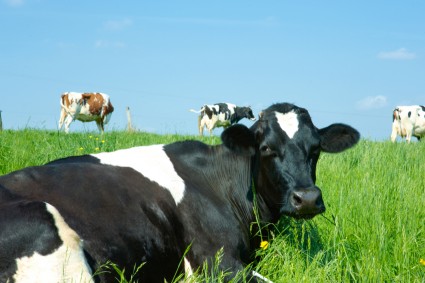 Are mathematicians working on a grand unified theory of cow dynamics? It sure seems that way, according to a MIT Technology review post (hat-tip to Boing Boing):
Are mathematicians working on a grand unified theory of cow dynamics? It sure seems that way, according to a MIT Technology review post (hat-tip to Boing Boing):
Today, the mathematics of animal synchrony takes a cloven-footed step forward with the unveiling of a model that describes the collective behavior of cows.
Cows are well know for their collective behavior: they tend to either all lie down or all stand up for example. Jie Sun at Clarkson University in New York state and colleagues say that this behavior can be modelled by thinking of cows as simple oscillators: they either stand or lie and do this in cycles. These oscillators are also coupled: one form of coupling may be that a cow is more likely to lie down if those around it are lying down and vice versa.
This is not just some abstract thought experiment.
Happy cows tend to copy each other. And happy cows are also more productive by various measures such as the amount of milk they produce … That will ring a bell with many farmers who keep their cattle indoors during winter. They have long recognised that when cattle are so crowded that there is not enough room for them all to lie down at the same time, productivity drops dramatically. In fact, in some parts of the world there are rules about how much space cattle must have to lie down in.
Grist readers are familiar with the moral argument against dairy concentrated animal feeding operations, or CAFOs, and organic producers theoretically don’t have this problem, as the regulations specify access to outdoor pasture, implying a sufficient amount of space per animal. But this isn’t simply a case of proving in theory something that works in practice. Having math and thus economics on your side in debates like these is crucial. Further study in this area may prove to even the beancounters that the CAFO “economy of scale” is a false one.



